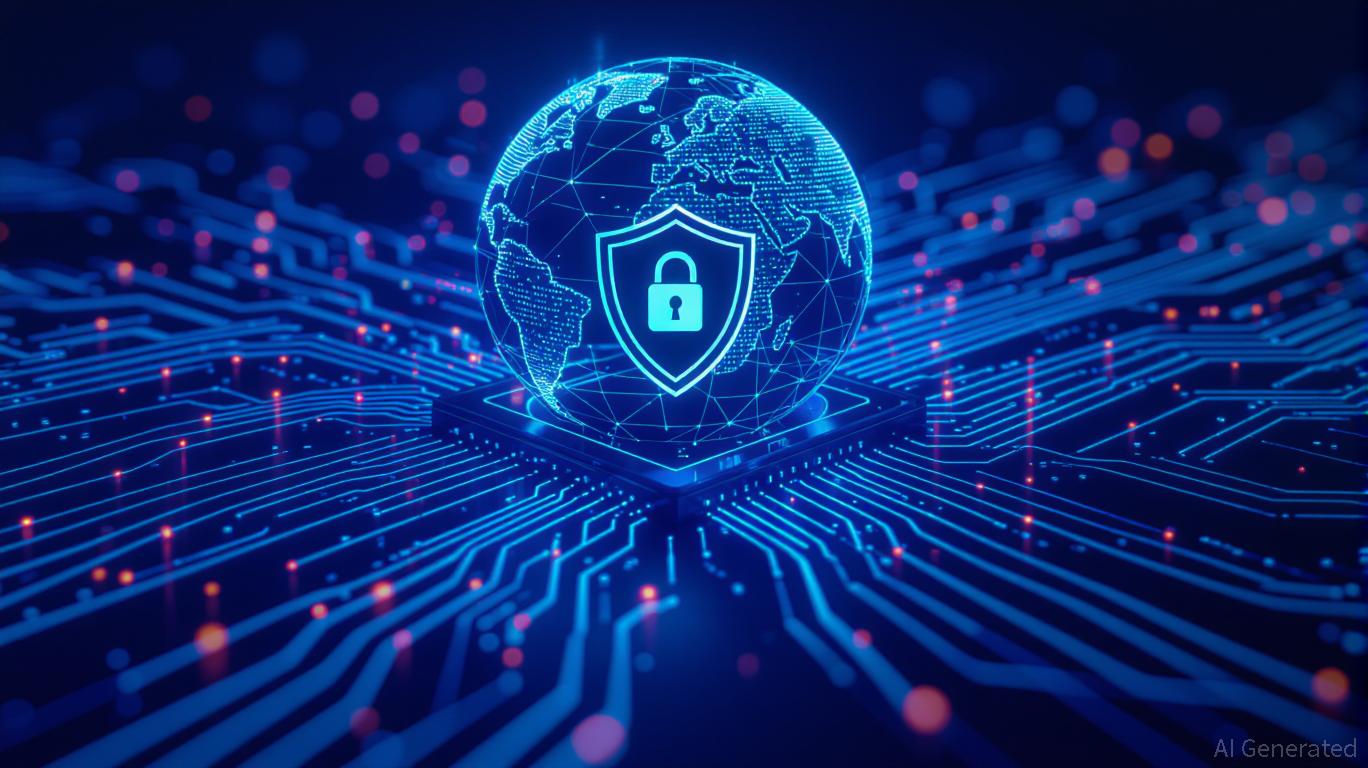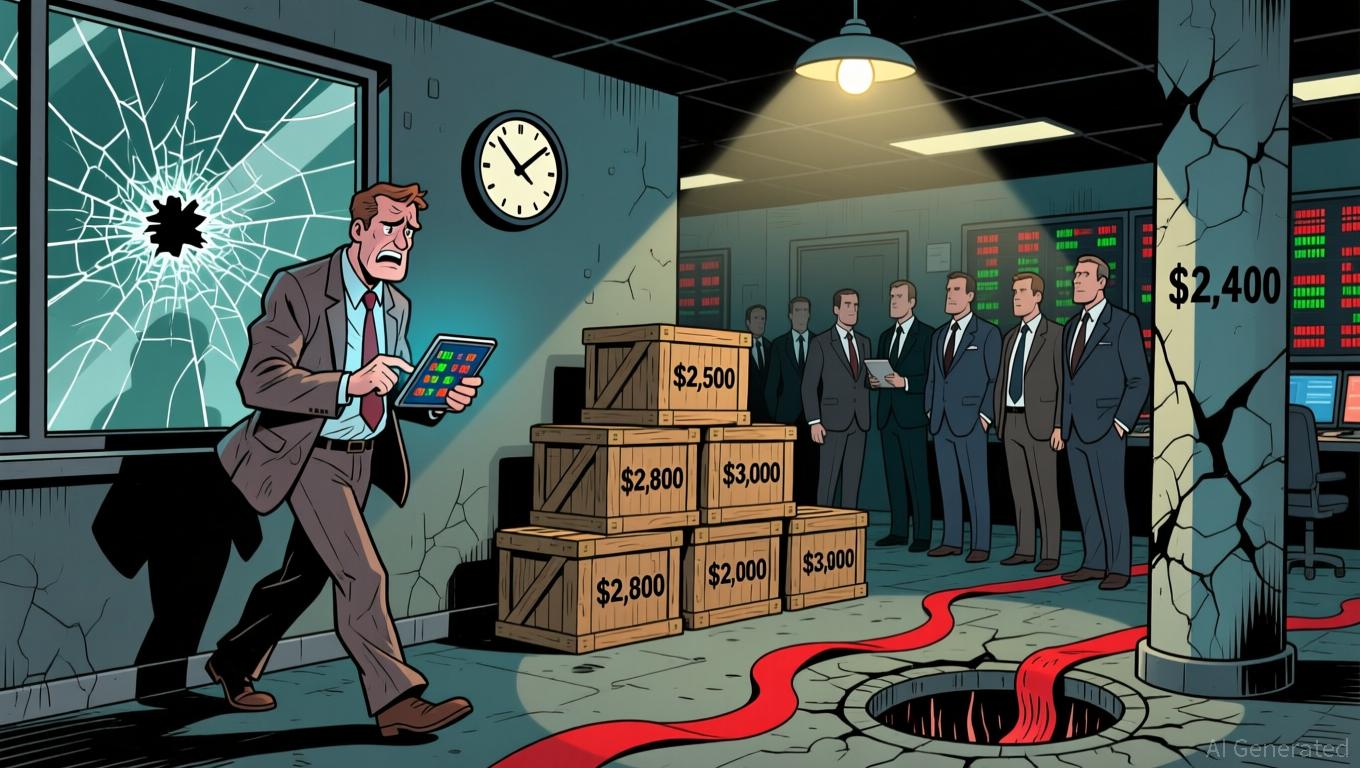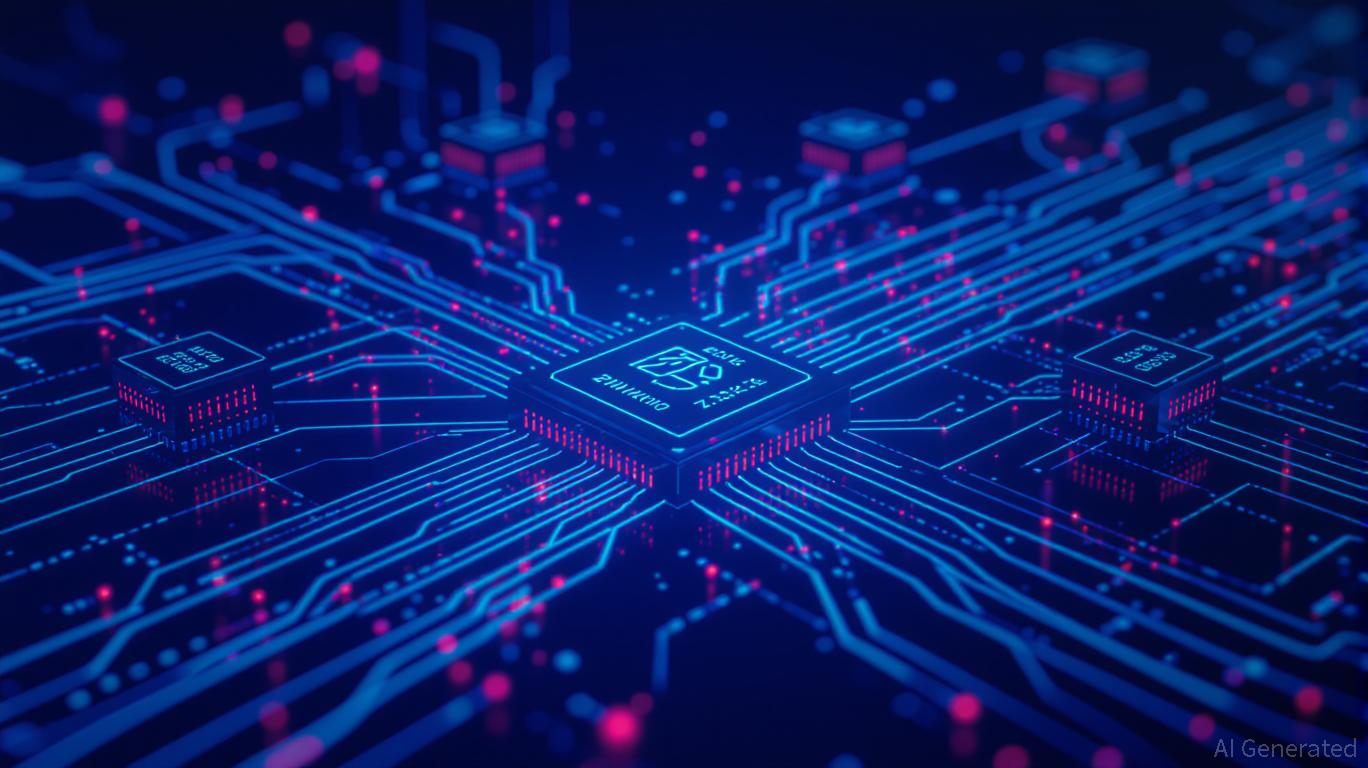Security Systems Technology and ICP Network Expansion: A Cybersecurity-Focused Path Forward for Decentralized Infrastructure
- ICP's decentralized identity and encryption address cybersecurity gaps, enabling secure financial behavior through blockchain innovations. - Cross-chain interoperability with Bitcoin/Ethereum via Chain Fusion drives DeFi growth, unlocking $B+ liquidity through trustless swaps. - Institutional adoption and 30% 2025 price growth reflect ICP's appeal, bolstered by Azure/Google partnerships and 1.2M active wallets. - Regulatory scrutiny and 11% price volatility highlight risks, though technical resilience an
Cybersecurity and Decentralized Infrastructure: ICP's Role in 2025 Investments
The intersection of cybersecurity and decentralized technology is transforming investment strategies in 2025, with the Internet Computer Protocol (ICP) standing out as a major force. As organizations increasingly focus on safeguarding financial operations, ICP’s advancements in decentralized identity, encryption, and interoperability are drawing significant attention from both individual and institutional investors. This analysis explores how ICP’s design tackles key cybersecurity issues, encourages adoption, and what this means for those navigating the rapidly changing Web3 landscape.
Building Trust: Decentralized Identity and Advanced Encryption
ICP’s security model is anchored by its decentralized identity system, known as Internet Identity. This solution allows users to verify their identities through passkeys, eliminating the need for centralized verification and reducing the risk of data breaches—a crucial factor for financial platforms. Notably, ICP’s partnership with the United Nations Development Program (UNDP) to create secure digital credential storage demonstrates its practical benefits for Micro, Small, and Medium Enterprises (MSMEs), enhancing trust in digital transactions.
In addition, ICP leverages chain-key cryptography, a breakthrough that boosts both encryption and network scalability. This technology enables swift transaction processing while maintaining high security standards, overcoming traditional blockchain challenges like slow speeds and susceptibility to 51% attacks. These capabilities make ICP particularly attractive to businesses aiming to adopt decentralized solutions without sacrificing security or efficiency.

Seamless Integration: Cross-Chain Interoperability and Secure Transactions
ICP’s Chain Fusion technology enhances its security proposition by enabling direct interaction with major blockchains such as Bitcoin and Ethereum. This approach removes the need for intermediaries in cross-chain operations, thereby lowering counterparty risks and promoting safer financial practices. The introduction of the Bitcoin DeFi Hub in August 2025 is a prime example, facilitating trustless exchanges between BTC and ICP ecosystem tokens and unlocking substantial liquidity. These innovations position ICP as a central player in Bitcoin-based decentralized finance, appealing to investors interested in both scalability and secure asset management.
Investor Sentiment and Market Influence
ICP’s robust security features have had a tangible impact on investor trust. The adoption of governance mechanisms like the “vote → list → trade” process by institutions has contributed to a 30% price rise in 2025, signaling strong capital inflows. The rollout of non-custodial payment options and comprehensive security audits has also made it easier for traditional financial entities to participate, further boosting ICP’s attractiveness.
Market data supports this momentum: following the July 2025 launch of the Caffeine AI platform—which empowers developers to build decentralized applications using natural language or image prompts—ICP’s trading volume jumped by 131%. By November 2025, the network boasted 1.2 million active wallets and was handling millions of smart contract executions daily. Collaborations with major cloud providers like Microsoft Azure and Google Cloud have further enhanced scalability and resolved previous interoperability barriers, paving the way for broader enterprise adoption.
Obstacles and Regulatory Factors
Despite its advancements, ICP is not immune to challenges. A recent 11% price decline to $7.92 underscores its exposure to market fluctuations. Additionally, increased regulatory attention from agencies such as the U.S. Securities and Exchange Commission (SEC) introduces further uncertainty, especially as blockchain projects with AI components face heightened scrutiny. Investors must carefully balance these risks against ICP’s technological strengths and expanding institutional backing.
Summary: Investing in Security-Driven Decentralized Infrastructure
ICP’s integration of decentralized identity, robust encryption, and cross-chain compatibility marks a significant step forward at the intersection of cybersecurity and decentralized infrastructure. By addressing essential concerns like privacy, scalability, and trust, ICP is well-positioned to benefit from the growing institutional embrace of Web3. While regulatory and market uncertainties remain, the network’s technical progress and strategic alliances point to a strong potential for continued growth. For those seeking secure, long-term investment opportunities in the evolving decentralized landscape, ICP offers a compelling proposition.
Disclaimer: The content of this article solely reflects the author's opinion and does not represent the platform in any capacity. This article is not intended to serve as a reference for making investment decisions.
You may also like
XRP News Today: Abu Dhabi’s Green Light Establishes UAE as a Pioneer in Stablecoin Development
- Ripple's RLUSD stablecoin gains Abu Dhabi regulatory approval as UAE advances digital finance leadership. - ADGM's "Accepted Fiat-Referenced Token" designation enables institutional use for lending and cross-border payments. - RLUSD's $1.2B market cap growth reflects institutional demand, backed by USD reserves and dual blockchain operations. - UAE's ADGM-DIFC regulatory synergy attracts global fintechs , with Ripple expanding partnerships across Africa and Asia. - Regulatory milestones position RLUSD to
Ethereum Updates: Ethereum Drops to $2,800, Prompting Surge in Demand for ZKP's Hardware-Based Presale
- Ethereum's price fell below $2,800, triggering $6.5M liquidations and testing critical support levels amid declining on-chain demand metrics. - Institutional players like BitMine accumulated 3.62M ETH (~$10.4B) despite the selloff, signaling long-term bullish conviction. - ZKP's hardware-driven presale gained traction with $17M in ready-to-ship Proof Pods and Miami Dolphins partnership for privacy-focused sports analytics. - Mutuum Finance's $19M DeFi presale and ZKP's auction model with $50K wallet caps

Vitalik Buterin Supports ZKsync: What This Means for Layer 2 Scaling
- Vitalik Buterin endorsed ZKsync in late 2025, highlighting its "underrated and valuable" work alongside the Atlas upgrade achieving 15,000 TPS and $0.0001 fees. - ZKsync's zero-knowledge rollups and EVM compatibility enabled institutional adoption by Deutsche Bank , Sony , and Goldman Sachs for cross-chain and enterprise use cases. - The Fusaka upgrade aims to double throughput to 30,000 TPS by December 2025, positioning ZKsync to compete with Polygon zkEVM and StarkNet in Ethereum's Layer 2 landscape. -

The ZK Atlas Enhancement: Revolutionizing Blockchain Scalability?
- ZKsync's 2025 Atlas Upgrade achieves 15,000–43,000 TPS with sub-1-second finality, addressing Ethereum L2 scalability bottlenecks via Airbender proofs and modular OS. - DeFi protocols like Aave and Lido leverage ZKsync's $0.0001/tx costs to unify liquidity, while Deutsche Bank and Sony adopt its trustless cross-chain infrastructure for compliance and transparency. - ZK token surged 150% post-upgrade, with TVL hitting $3.3B and analysts projecting 60.7% CAGR for ZK Layer-2 solutions by 2031 amid instituti
